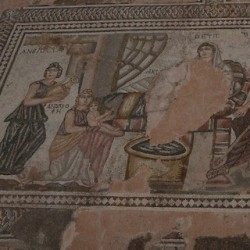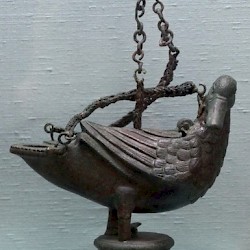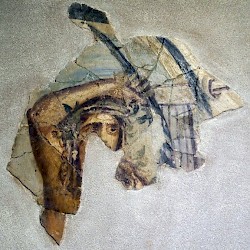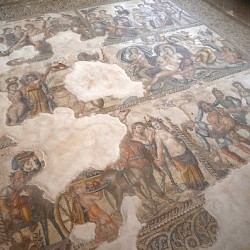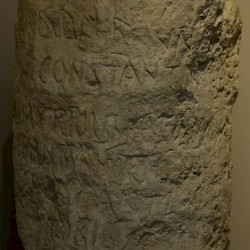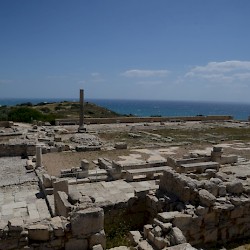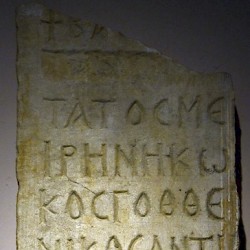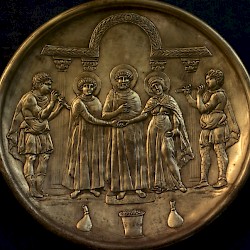Late Antiquity
Q2333703Cyprus (Greek Κύπρος): large island in the eastern Mediterranean, colonized by Phoenicians and Greeks.
Late Antiquity
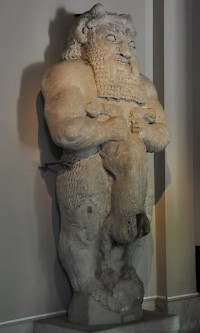
In the fourth century, Cyprus suffered from two earthquakes (in 332 and 342) and the provincial capital had to be moved from New Paphos to Salamis, which was renamed Constantia (after the emperor Constantius II). Generally speaking, however, the island continued to prosper.
Cyprus followed the normal course of the eastern part of the Roman Empire: the people followed the emperors and converted to Christianity. Reportedly, the mother of the emperor Constantine the Great, Helen, founded the Stavrovouni Monastery. Christian basilicas were built in Nicosia, Salamis, and Kourion. In 488, Cyprus received a special status within the church: it was considered autocephalous, meaning that its main bishop did not have to report to one of the patriarchs. This status is maintained up to the present day.
The island did not suffer directly from the great wars of the fifthe and sixth century, until in the seventh century, the Arab expansion started. In 647, they attacked Cyprus for the first time. This conflict was to last until 680, when the Byzantine emperor and the Umayyad caliph decided to share the rule of the theme (district) of Cyprus and divide the taxes. This arrangement was kept by both sides until the island became fully Byzantine in 965.
